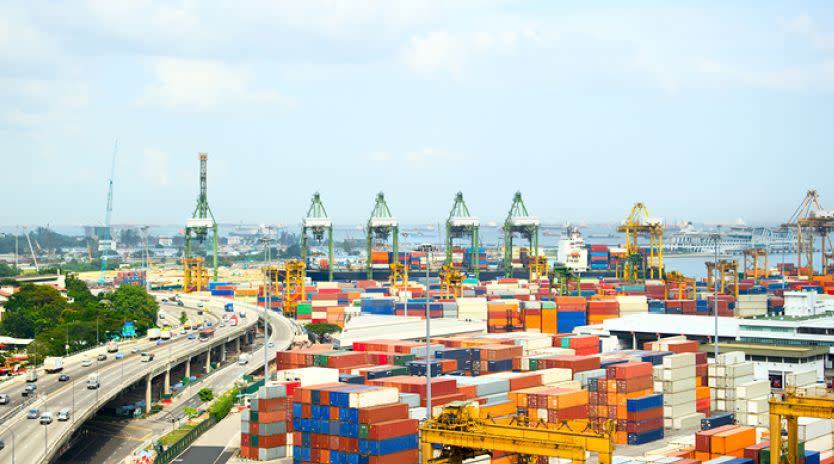Singapore’s manufacturing output sinks further into the red at -3.2% in November

On a seasonally adjusted month-on-month basis, manufacturing output decreased by 1.2% in November.
Singapore’s manufacturing output fell further to 3.2% on a y-o-y basis in November, down from October’s -0.8% print.
Excluding biomedical manufacturing, output decreased by 4.8%.
On a seasonally adjusted month-on-month basis, manufacturing output decreased by 1.2% in November. Excluding biomedical manufacturing, output decreased by 6.0%.
Among the clusters, transport engineering, general manufacturing, biomedical manufacturing and precision engineering saw output expansions in November at 18.8%, 10.3%, 6.9% and 4.2% respectively.
The growth in transport engineering was attributable to the increases in both the aerospace segment and marine & offshore engineering segment. The aerospace segment grew by 26.2% thanks to the higher maintenance, repair and overhaul (MRO) jobs from commercial airlines on the back of increased global air traffic. The marine & offshore engineering segment expanded by 16.6% due to the higher levels of work done in offshore conversion projects as well as the increased production of oil and gas field equipment.
In general manufacturing, the food, beverage & tobacco segment expanded 23.8%, on account of higher production of dairy and beverage products, more than offsetting the 1.7% and 4.4% declines in the printing and miscellaneous segments.
The biomedical manufacturing cluster saw the pharmaceuticals segment grow by 14.1% due to a different mix of active pharmaceutical ingredients being produced compared to a year ago. Meanwhile, output of the medical technology segment remained unchanged.
In precision engineering, the machinery & systems segment expanded 10.0%, on account of higher output of semiconductor foundry equipment. This more than offset the 7.6% decline seen in the precision modules & components segment, which fell due to the lower production of optical products, electronic connectors and bonding wire.
Output for the chemicals cluster fell by 11.3% as the output of the other chemicals and specialties segments declined 9.5% and 12.8% respectively, due to the lower output of fragrances and the lower production of mineral oil additives and industrial gases. In addition, the petrochemicals segment saw output fall 17.5% due to weak market demand and plant maintenance shutdowns. Meanwhile, the petroleum segment was the only bright spot with a 7.8% expansion due to the higher demand for jet fuel driven by the relaxation of global air travel restrictions.
Output for the electronics cluster fell by 12.4% as the infocomms & consumer electronics, semiconductors and other electronic modules & components segments declined 12.1%, 14.0% and 21.6% respectively on the back of softening demand, more than offsetting the 9.3% expansion for the computer peripherals & data storage segment.
See Also:
Click here to stay updated with the Latest Business & Investment News in Singapore
Get in-depth insights from our expert contributors, and dive into financial and economic trends

 Yahoo Finance
Yahoo Finance 